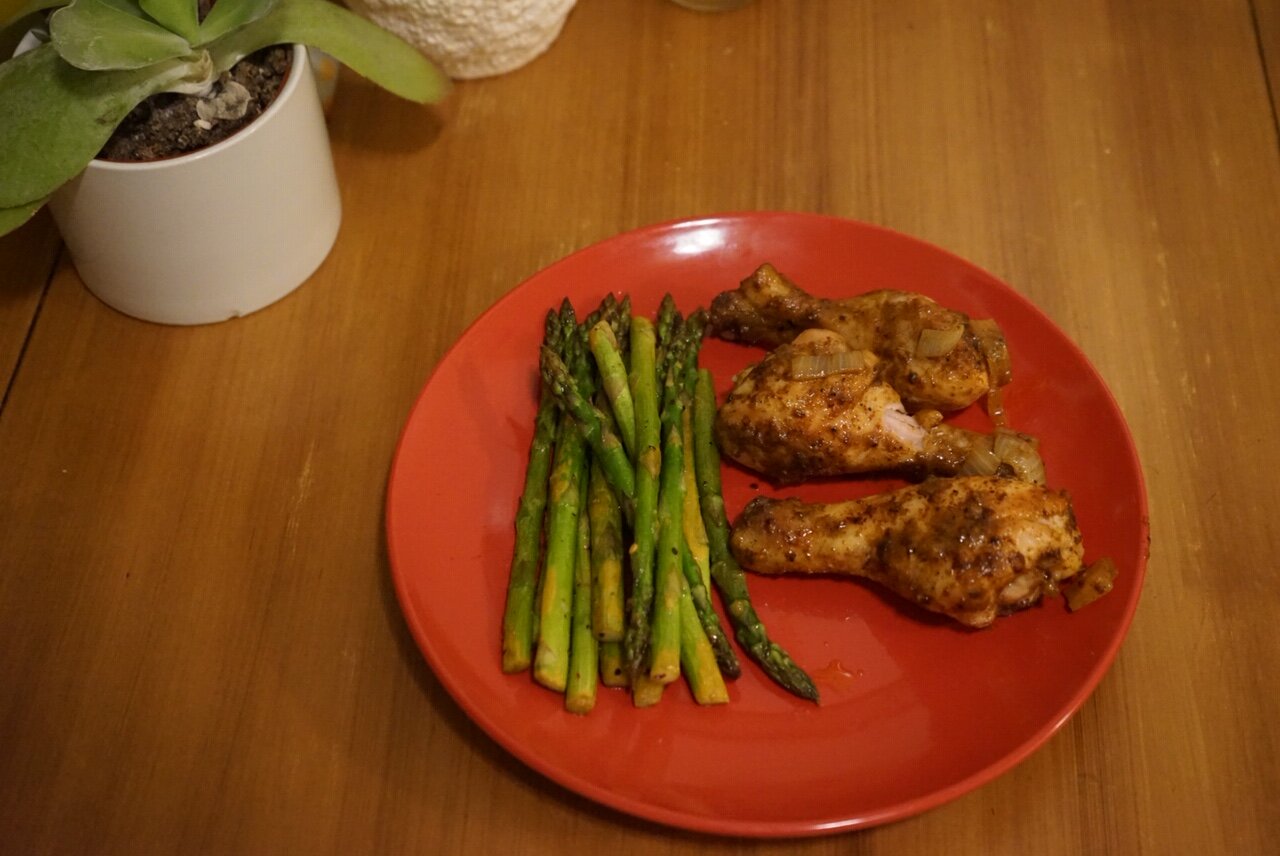Game 62: Jamaal Wilkes - Curry Flavored Baked Chicken
What is it about NBA players that make them better actors than other athletes? Is it that, unlike staid MLB players or helmeted and routinely replaced NFL players, we see their full range of emotions during a game? Is it because the game of basketball features specialized skills, like trash talking and flopping and complaining to refs, that require an actor’s commitment to honest human emotions? From movies are diverse as Space Jam* to Blue Chips and He Got Game to Uncut Gems, NBA stars have shown their thespian skills in roles that aren’t entirely chained to a hardwood floor. One of the first to do so was Jamaal Wilkes, the UCLA champion and Hall of Fame Showtime Laker, who still went by Keith when he played the titular role in 1975’s blaxploitation drama Cornbread, Earl, and Me.
Yes, Michael Jordan was GOOD in Space Jam. The movie is overrated 90s nostalgia porn, but MJ is fantastic in his role considering that he
A. Never acted before
B. He was alone in front of a green screen for 90% of the movie. He wasn’t on a set or location where they then added in the Looney Tunes. He was ALONE.
Due to the era it came out in, Cornbread, Earl, and Me is mislabeled as a blaxploitation film. Yes, it features funk music and some stock characters that are stereotypical in the genre’s depiction of African-American life in the blighted American cities of the 1970s. But other than some melodrama, it’s simply a measured drama about one neighborhood’s reaction to a police shooting of an unarmed man: Cornbread, played by Wilkes, a high school superstar who’s two weeks away from escaping the hustlers and criminals and crooked cops who control his neighborhood. And while Wilkes is serviceable in his role, the real star of the movie is a young Laurence Fishburne in his film debut.
The Earl and Me in the title refer to two young pre-teen boys, Earl and Wilford, who look up to Cornbread as one of the only positive influences in their neighborhood. Wilford is played by a 13 year old Laurence Fishburne whose squeaky voice makes him seem even younger. Just a couple years later, a pimply and lanky Fishburne lied about his age and started shooting Apocalypse Now, but here he looks like a 5th grader. When we first meet Earl and Wilford, the two talk lynching while as they watch Cornbread dominate the local streetball game. Earl says it only happens down south, but Wilford says that their unnamed city (the film was shot in L.A. but the book it was based on takes place in Chicago) is no better.
30 minutes into the film, Cornbread is shot in the back by two cops, one black and one white, who mistook the college-bound basketball player for a murderer and the orange soda in his hand for a gun. Four decades later, it’s an all too familiar tale, albeit one in which the residents who witnessed the shooting don’t have cell phones. Instead, in this film, they pour out of their homes and beat the ever living shit out of the cops for killing the one bright beacon of hope in their neighborhood.
While the black officer is recovering in the hospital, he’s visited by the lawyer representing Cornbread’s parents, an old friend of his who grew up in that same neighborhood. It’s the movie’s best scene, a tight interaction that goes from the cop defending he and his partner’s actions to his choice to join the racist institution that harassed him as a teen. When the lawyer prods him by saying that his childhood friend thinks of himself as a missionary who just got beat up by the natives, the cop fires back with venom in his voice, saying he’s “the keeper of the savages.” It’s the movie’s best scene and it holds up against future on-screen explorations of black cops like in Boyz n the Hood.
As the evidence becomes clearer that the pouring rain prevented the cops from identifying Cornbread and that a loud garbage truck meant he couldn’t have heard their screams, the police force goes into overdrive to prevent the neighborhood from testifying. They threaten to plant marijuana on a shopkeep and to pull a mother’s welfare eligibility, but Wilford remains steadfast in his mission to testify in court.
The final act of the film is a courtroom drama run by a biased and racist judge, where witness after witness either tells false testimony or keeps their mouth shut. But when Wilford is called up, he gives such a passionate retelling of the events that even the judge declares, while looking at the police, that somebody is lying. Finally, the black cop is called up and tearfully admits that if the boy’s testimony is true, then it’s possible that he and his partner made a mistake.
While labeled as a blaxploitation film online, there’s very little of the genre’s tropes to find in this film. It’s simply a movie made by African-Americans about African-Americans. Back in the ‘70s, that was all it took for a movie to be labeled as “blaxploitation.” If it was released in the ‘90s at the height of the post-Do The Right Thing and Boyz n The Hood era, where studios started pumping money into black-directed productions for a brief moment, a VHS of Cornbread would’ve been derisively placed in the “urban” section of your local video store. But it’s neither; it’s a drama. A drama that’s played out too many times in real life American since its release. Because even if you’re a rich and famous NBA player, all it takes is one encounter with the police to change your life.
————————————————
Curry Flavored Baked Chicken
4 pounds chicken cut up
1 teaspoon paprika
2 tablespoons curry powder
1 ½ teaspoon black pepper
1 ½ teaspoons salt
Pinch of ground ginger
8 ounces butter, melted
1 onion, sliced
Baster
Combine melted butter, curry powder, ginger, salt, pepper, and paprika. Put chicken in a shallow roasting pan, top sides down, and thoroughly baste with butter mixture. Bake at 375 degrees for 20 minutes, basting frequently. Turn chicken and continue cooking for 20 minutes longer. Pour off sauce from roasting pan and reserve. Pour sauce in small saucepan, add onions, and simmer gently for a few minutes. Set chicken under broiler for a few minutes to brown, while periodically basting with sauce. When chicken reaches a rich brown color, spoon remaining sauce over and serve immediately.
The sauce is “smooth as silk.”
One of Desus Nice’s many AKAs is The Curried G.O.A.T., which is exactly how I’d describe this recipe. I was so glad to finally have a Goldstein and Gasol recipe come up that was simple. Curry, paprika, ginger. That’s it. So much of the crap I make is 15 ingredients long and after I spend an hour cooking, I can maybe make out 2 of them.
This dish takes a while to cook. And because of the constant basting, it’s not something you can just set and forget. But man is it worth it. I made 10 huge drumsticks and ate half of them on the spot. Wilkes is the 4th Hall of Famer to come from the Showtime Lakers and is sometimes forgotten just because his colleagues were Magic Johnson, James Worthy, and Kareem Abdul-Jabbar. But their recipes were benchwarmers compared to THE CURRY G.O.A.T.














